Connector Details
| Name | Value |
|---|---|
| Platform | Slack |
| Auth Type | OAuth |
| Direction | Read |
| Tap Repo | https://github.com/hotgluexyz/tap-slack |
| Tap Metrics | Usage: |
Credentials Setup
Follow the steps below to get the credentials you need to use the Slack connector. The first thing that you need to do to get your Slack OAuth credentials is to head to the Slack API dashboard. If you do not have a Slack account, you will be prompted to create one. Once you’re on the Slack API dashboard, select create new app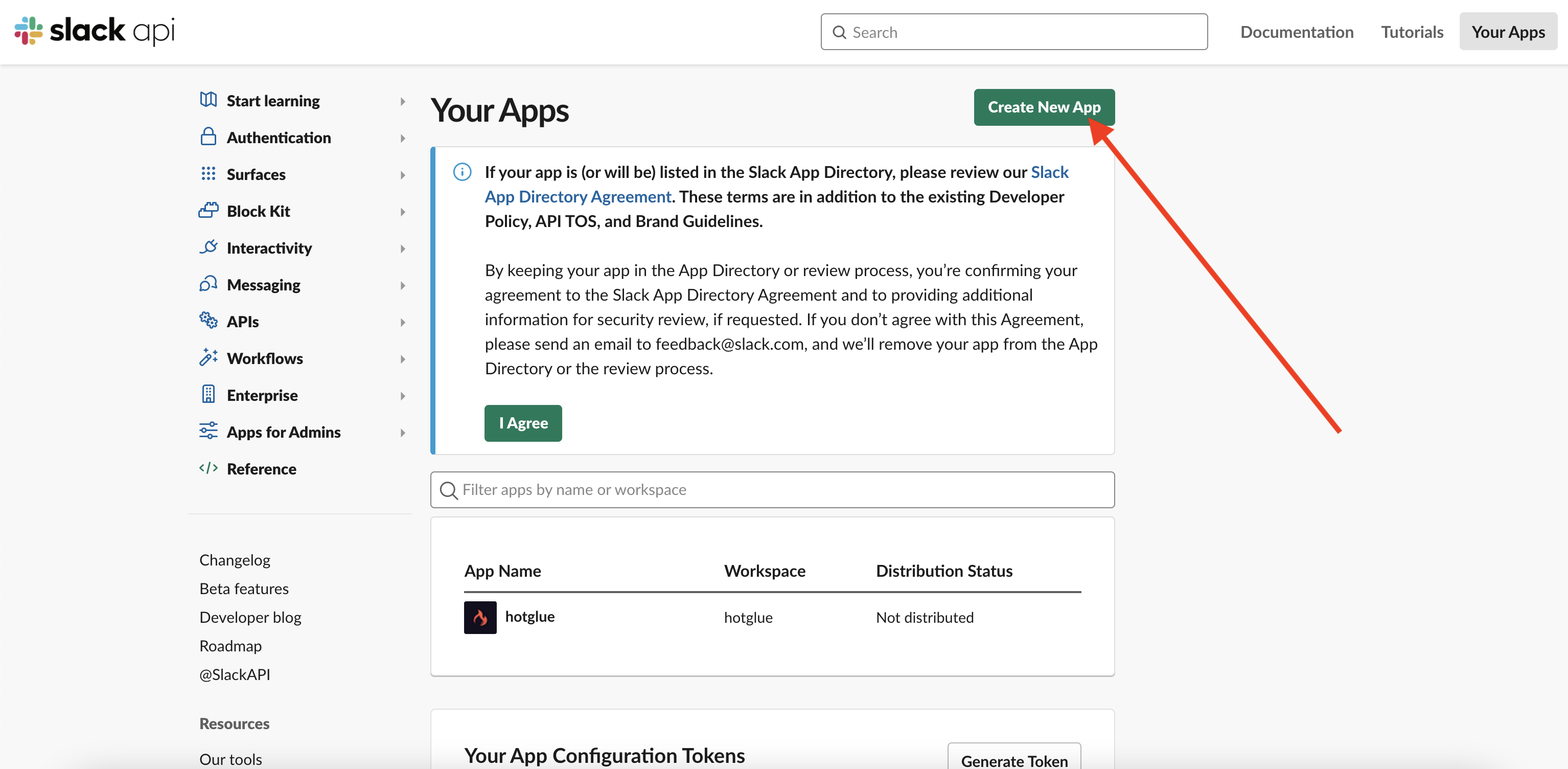 In the popup, select Create from scratch
In the popup, select Create from scratch
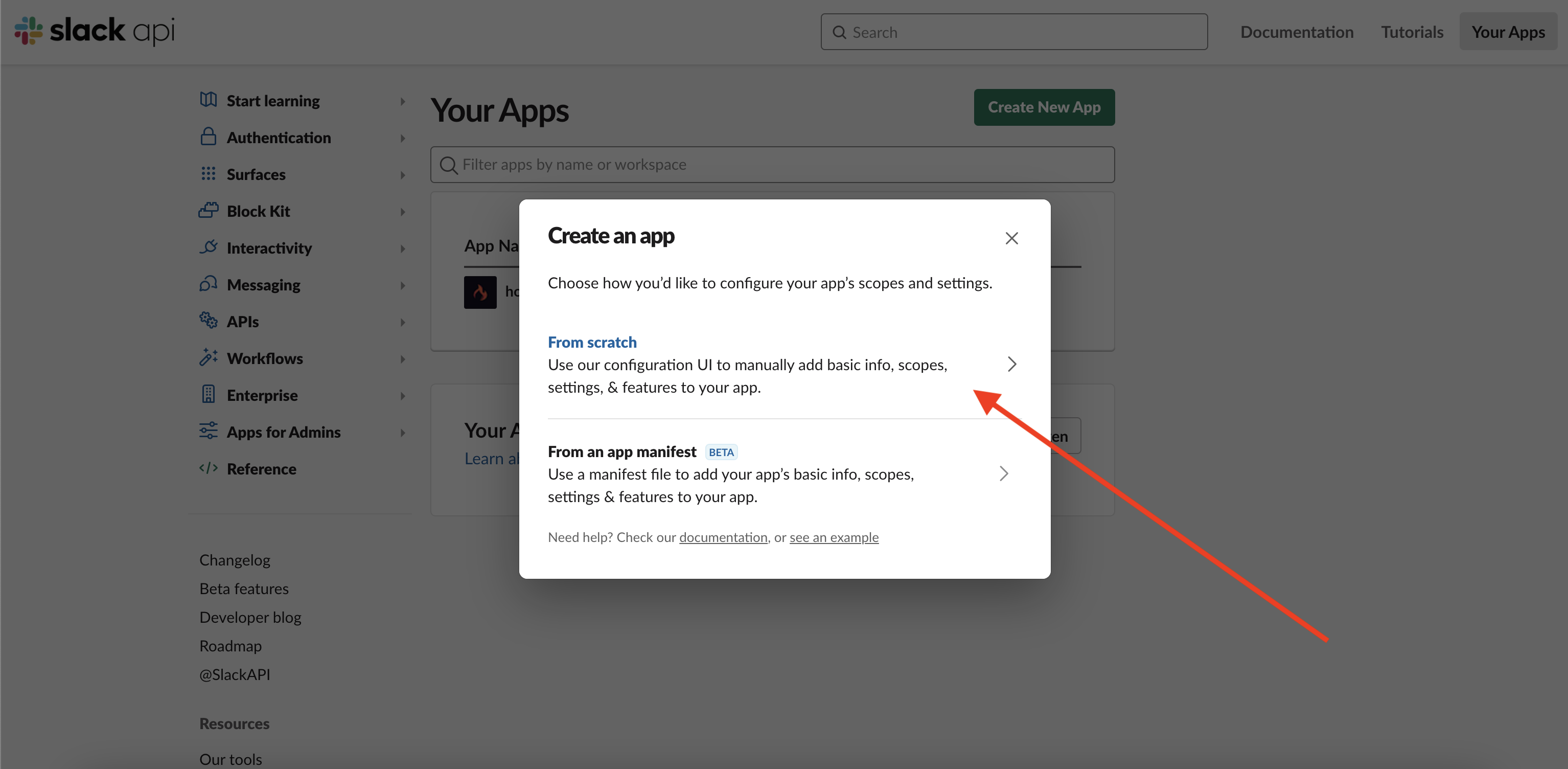 Now give your app a name, and pick a Slack workspace to test with, then click Create App
Now give your app a name, and pick a Slack workspace to test with, then click Create App
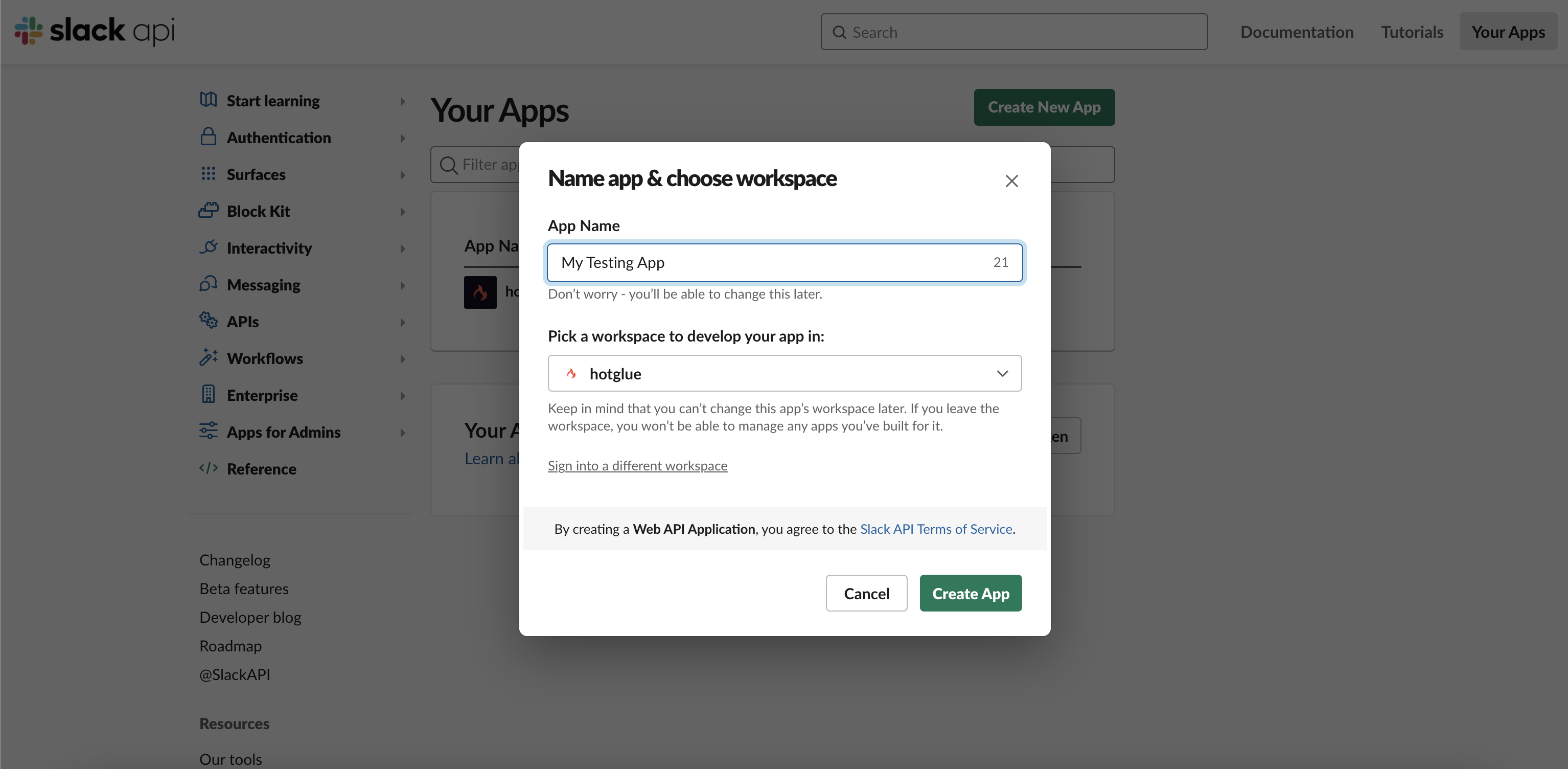 From the next screen, select OAuth & Permissions
From the next screen, select OAuth & Permissions
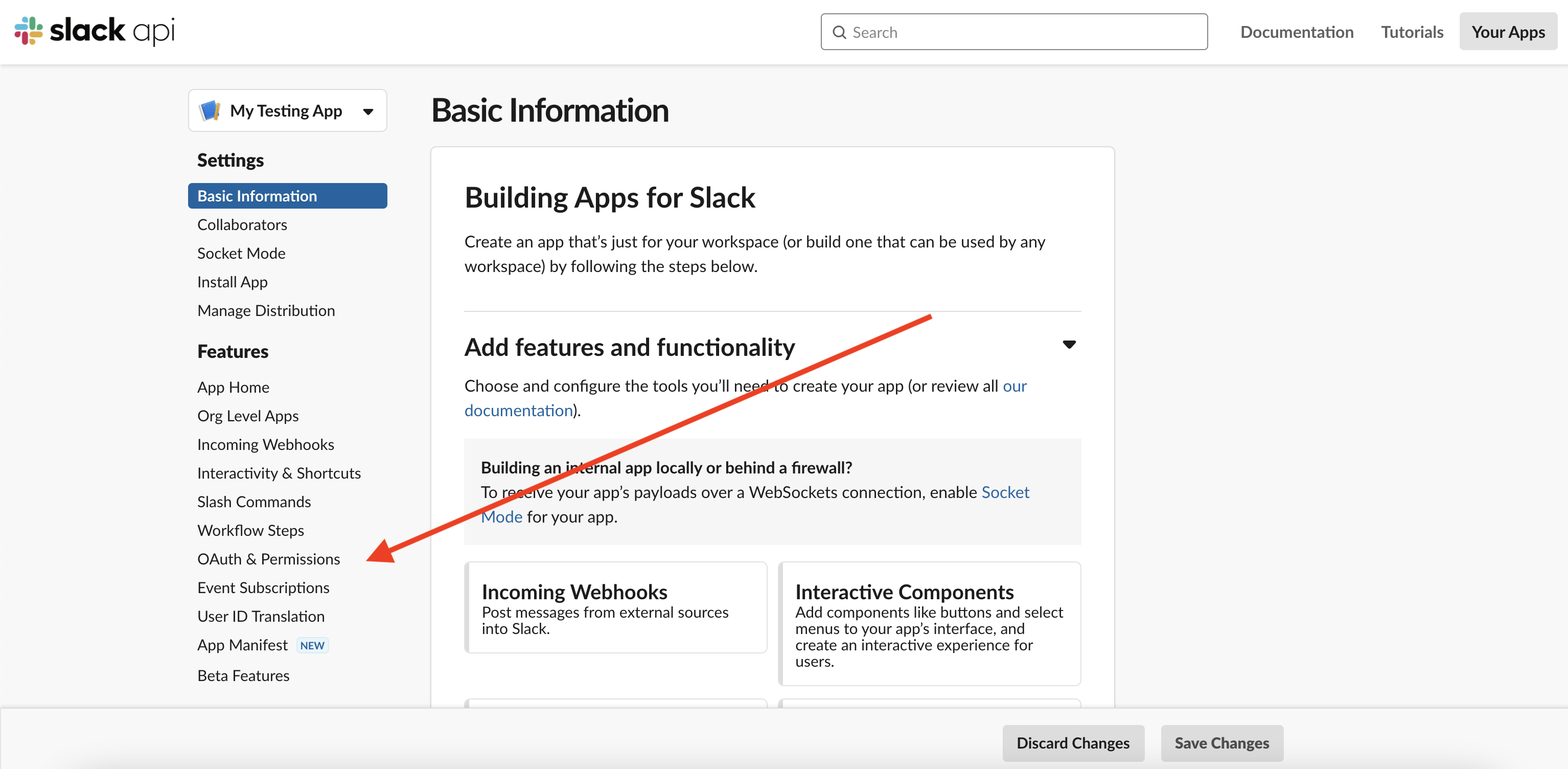 On the OAuth & Permissions page, scroll down to the Redirect URLs section, and add
On the OAuth & Permissions page, scroll down to the Redirect URLs section, and add https://hotglue.xyz/callback as a valid URL and click Save URLs
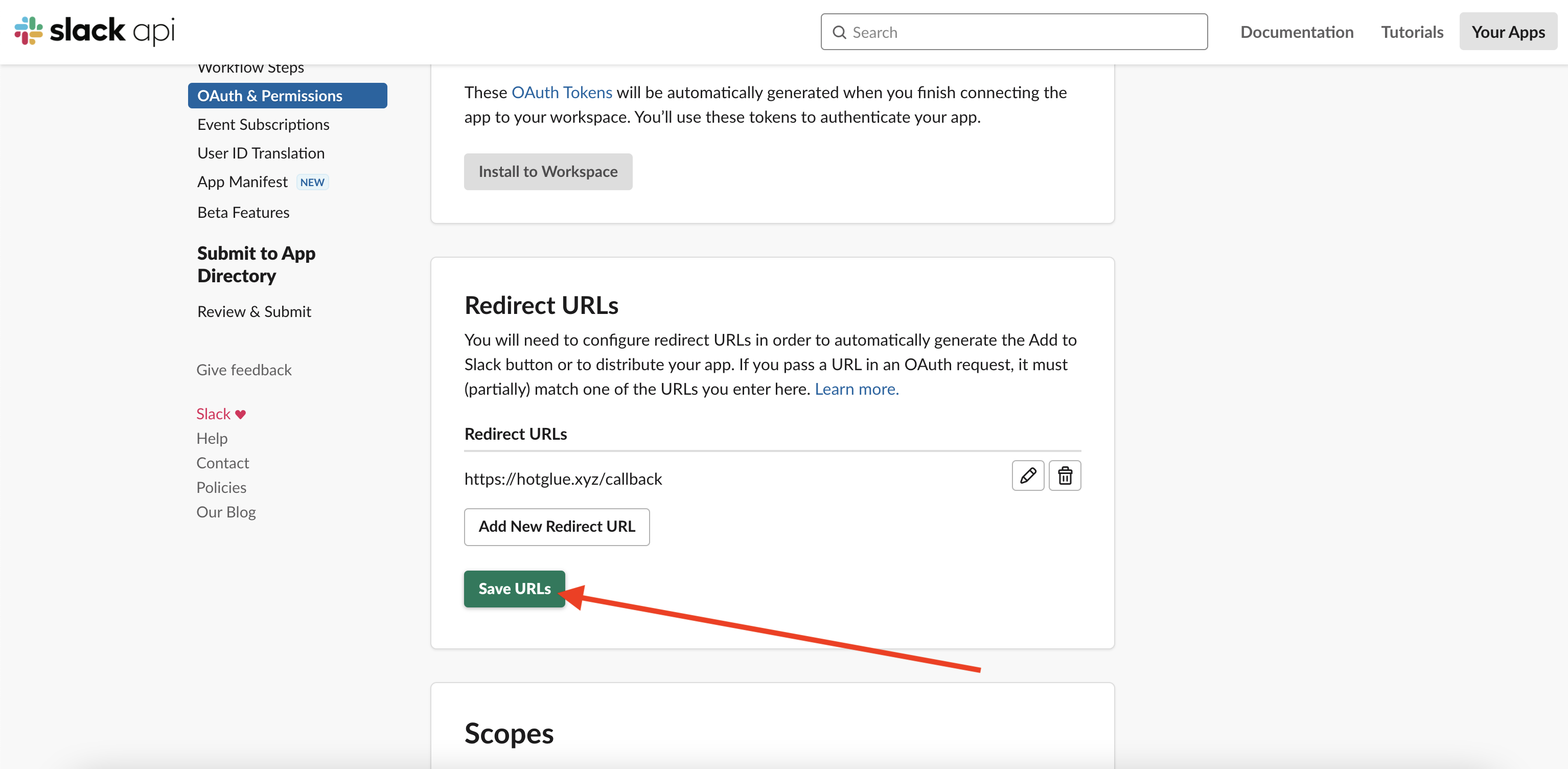 Now scroll down to the Scopes section. For hotglue to work, you must grant the following scopes:
Now scroll down to the Scopes section. For hotglue to work, you must grant the following scopes:
channels:historychannels:joinchannels:readfiles:readgroups:readlinks:readreactions:readremote_files:readremote_files:writeteam:readusergroups:readusers.profile:readusers:readusers:read.email
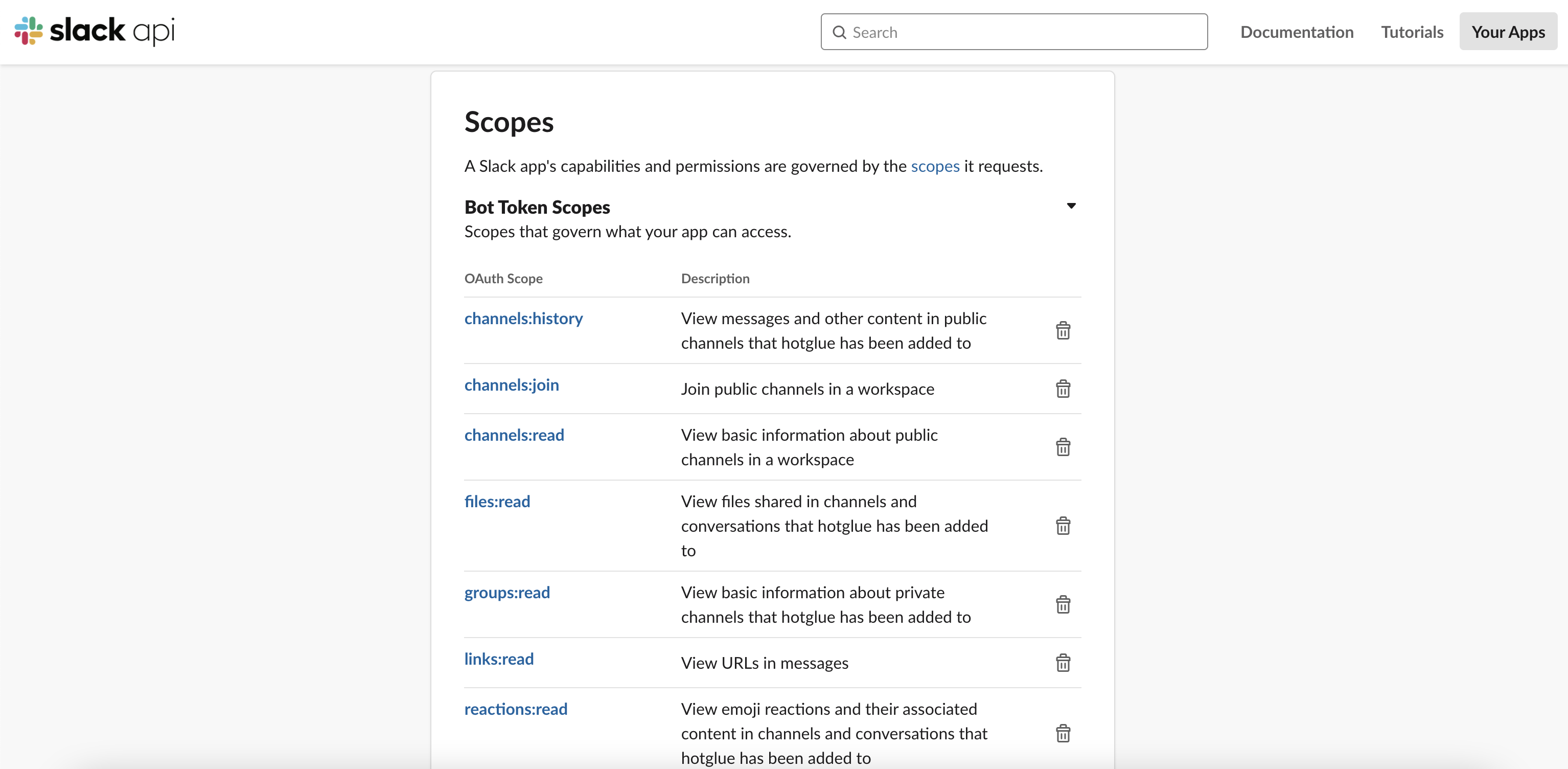 Finally, click on Basic Information in the top left.
Finally, click on Basic Information in the top left.
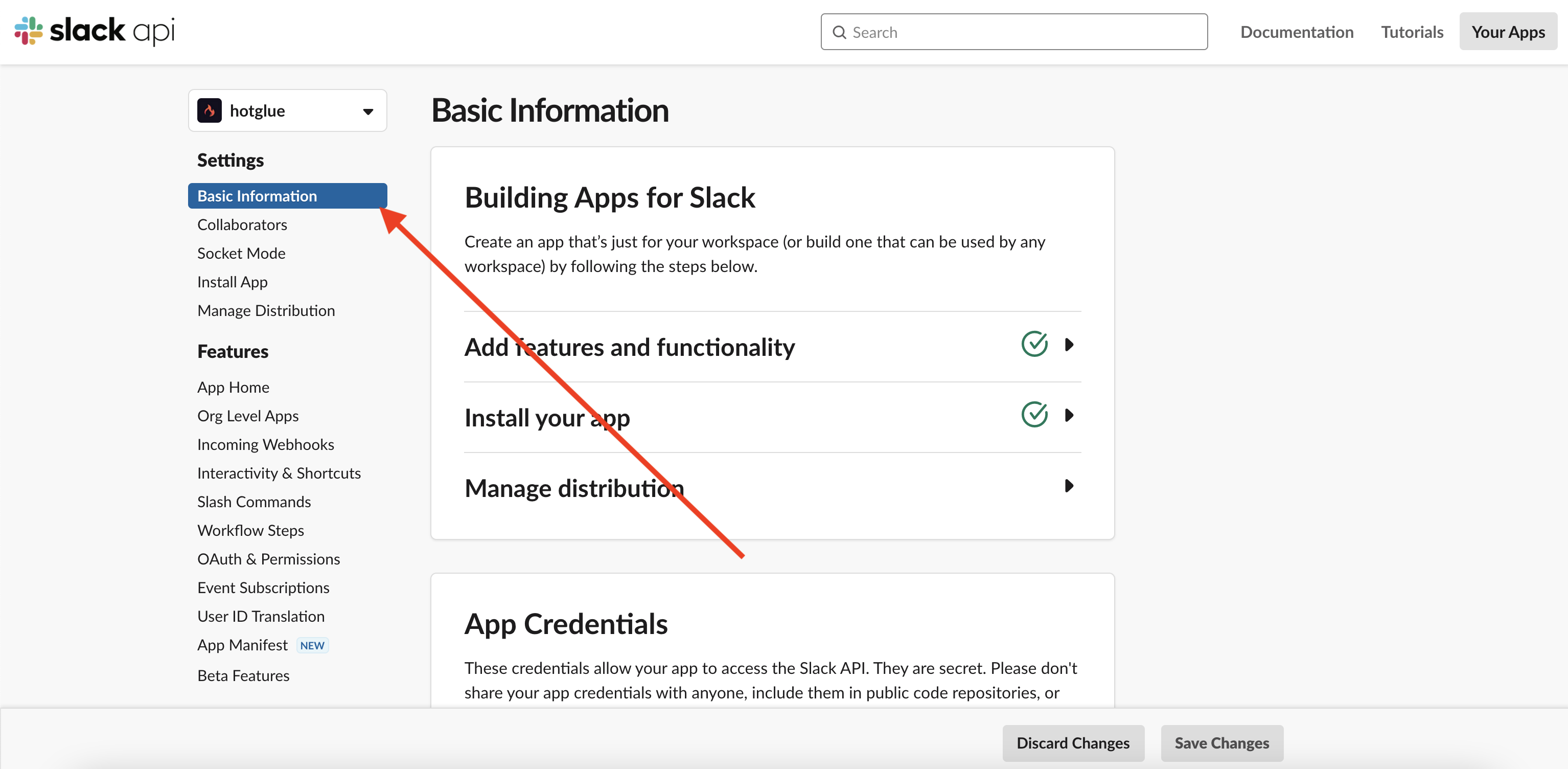 Now scroll down to the App Credentials section. Here you will be able to access the necessary client id and client secret.
Now scroll down to the App Credentials section. Here you will be able to access the necessary client id and client secret.
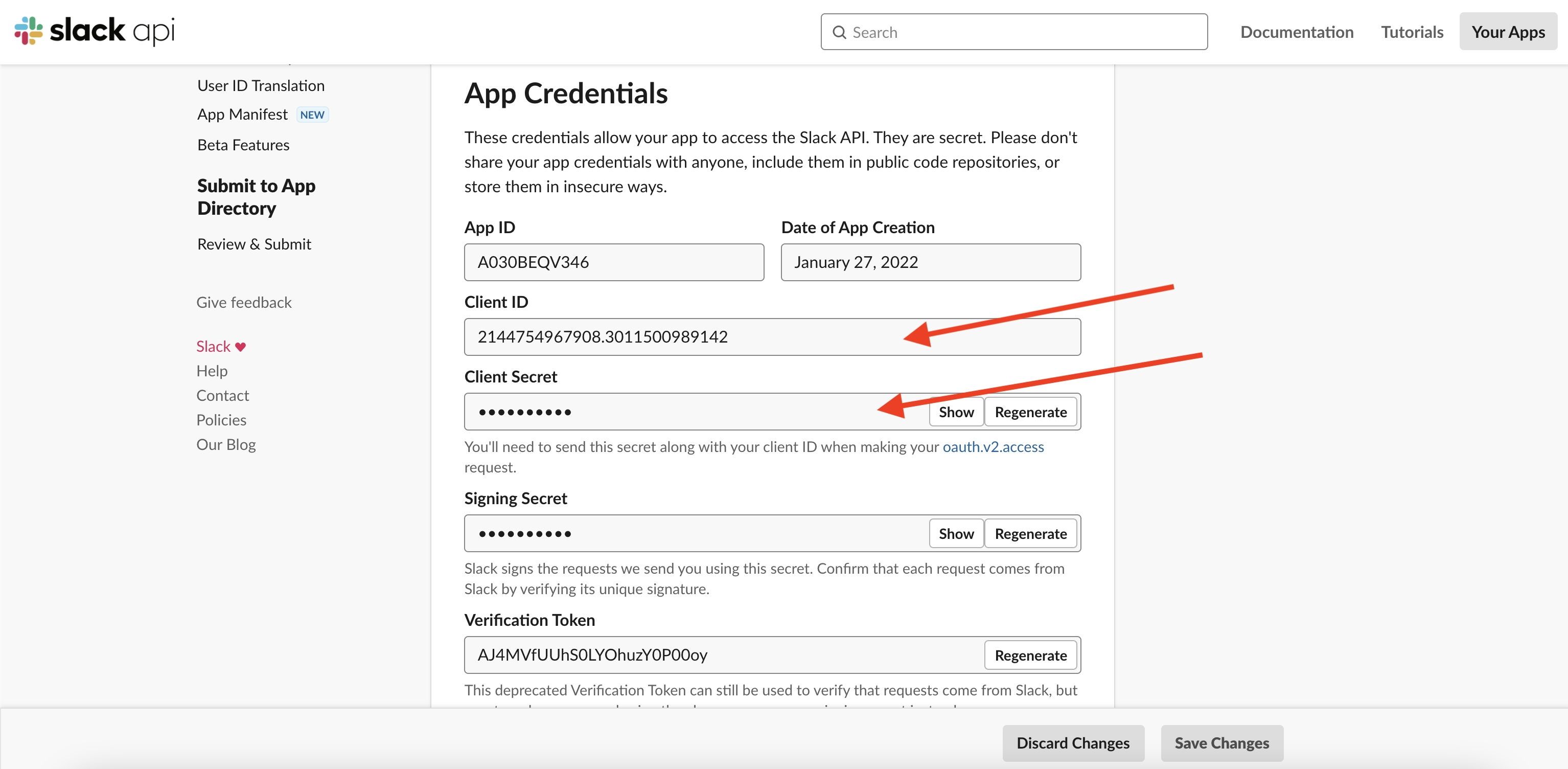 You can now use these credentials in hotglue to configure your Slack integration!
You can now use these credentials in hotglue to configure your Slack integration!
Add your Slack bot to a channel
Once a user has authenticated via OAuth with your Slack app, your bot will be available in the apps list of their Slack workspace. But before the bot can read any messages, you must first add them in the channels you wish to get messages from. Go to channel details in Slack and click on Integrations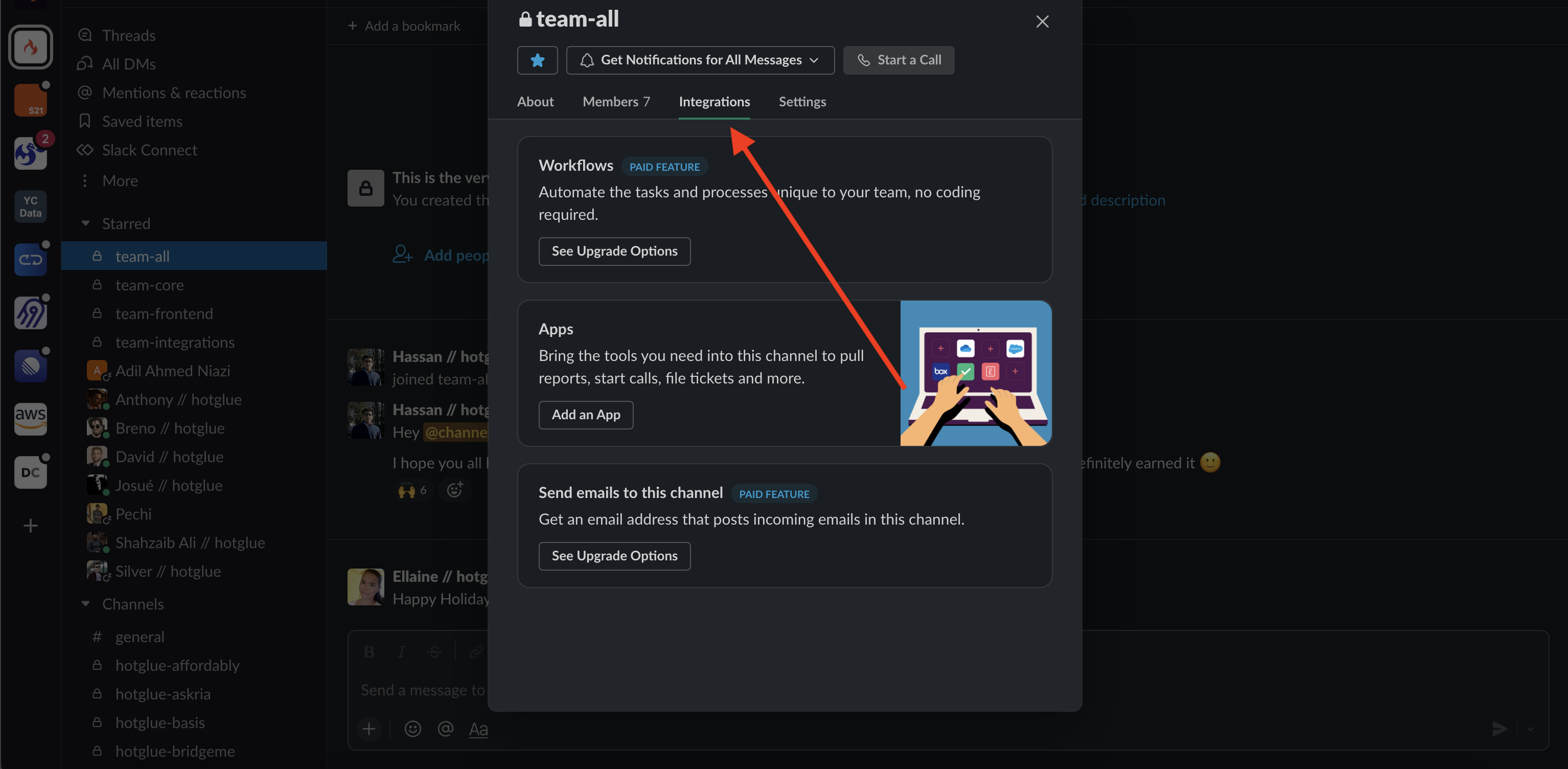 From here, click on Add an App, and select your app in the list
From here, click on Add an App, and select your app in the list
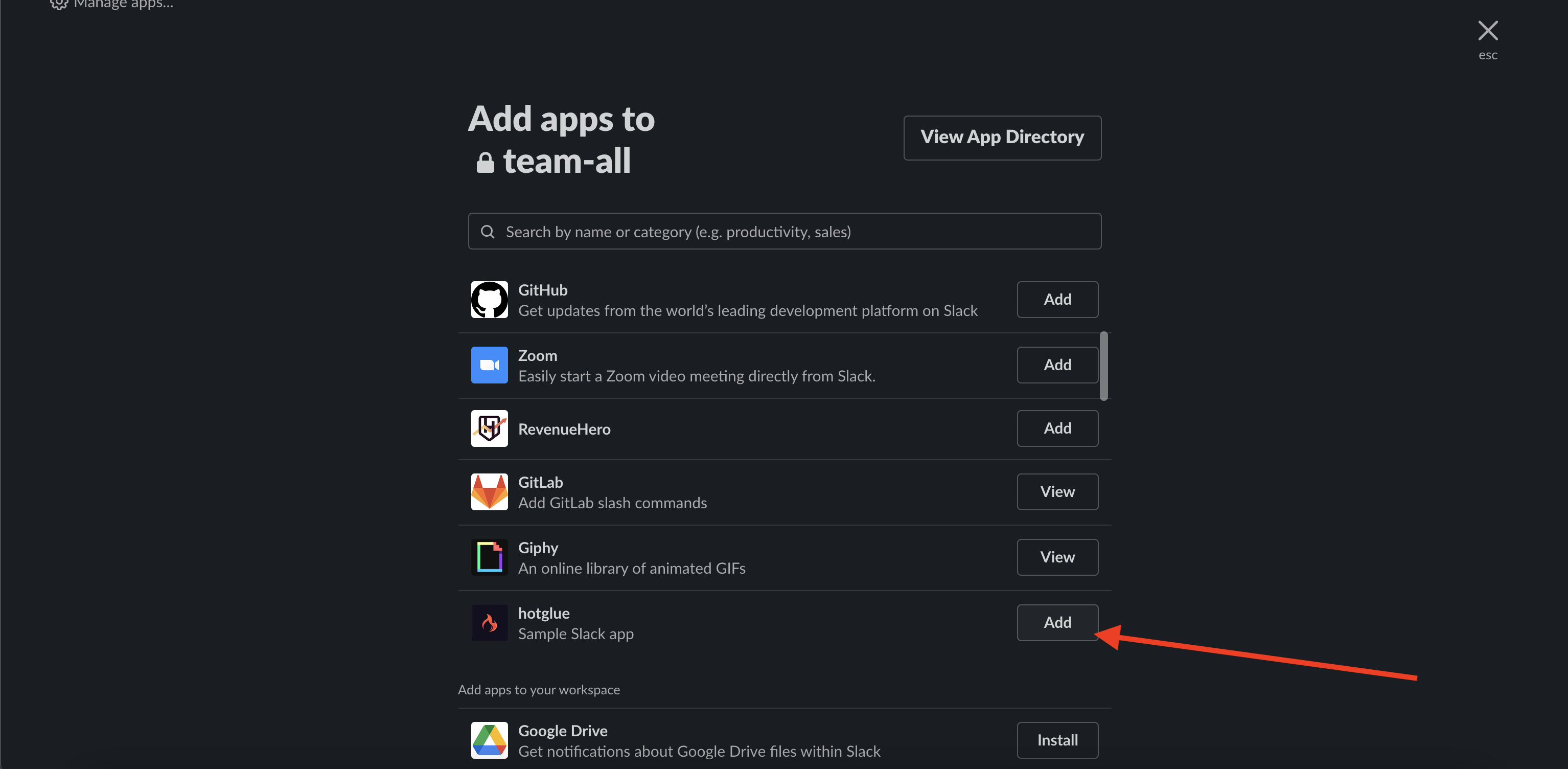 That’s it!
That’s it!